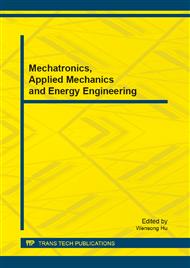p.195
p.201
p.205
p.211
p.217
p.222
p.228
p.232
p.237
Influence of Magnetic Field on Chip Serration Frequency for Turning Stainless Steel AISI 304
Abstract:
In this research, respond surface methodology (RSM) model was developed for the investigation and prediction in order to study the effect of cutting parameters and chip serration frequency during machining stainless steel AISI 304. The model can be used for analysis and prediction for complex relationship between cutting parameters and chip serration frequency on metal cutting process. Tin coated carbide insert is used with 120mm tool overhang to investigate the process. Permanent magnet with the 4500 Gauss power is compared in this experiment with the natural frequency to obtain the required data during machining. Chatter is found to appear as a resonance phenomenon when the frequency of chip serration is equal to or integer multiple of the prominent natural frequency/frequencies of the system component (s). Hence, it is important to study the chip serration frequency. At lower cutting speeds the chip is often discontinuous, while it becomes serrated as the cutting speed is increased. It has been identified that the chip formation process at higher speeds also has a discrete nature, associated with the periodic shearing process of the chip. In this paper a statistical technique is proposed to predict the frequency of chip serration as a function of cutting parameters in turning of stainless steel AISI 304 using Response Surface Methodology (RSM). 95% confident level was predicted using analysis of variance (ANOVA).
Info:
Periodical:
Pages:
217-221
Citation:
Online since:
September 2013
Keywords:
Price:
Сopyright:
© 2013 Trans Tech Publications Ltd. All Rights Reserved
Share:
Citation:


